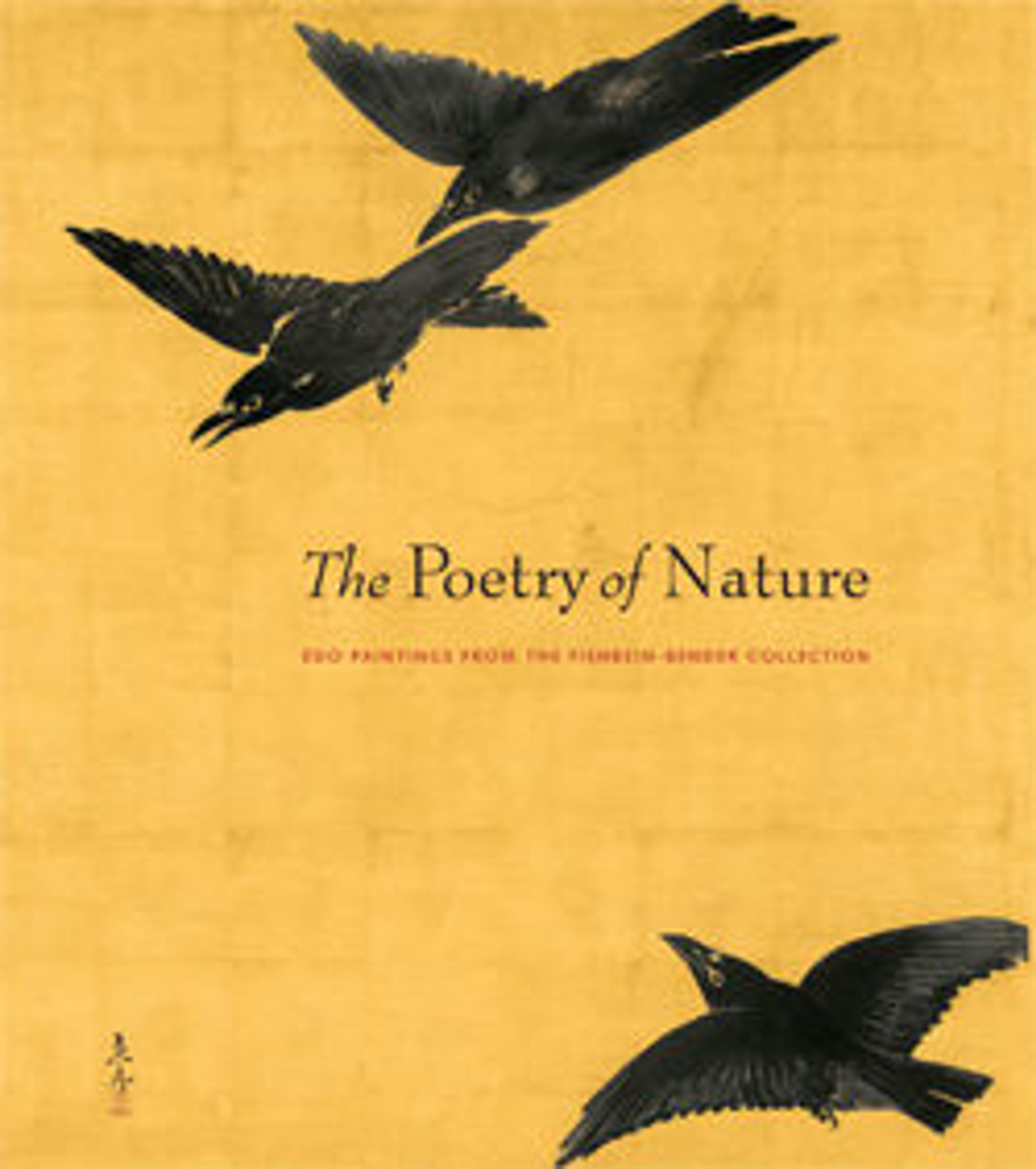Pheasants among Trees: Flowers of the Four Seasons
Paired pheasants—symbols of imperial elegance—pose amid foliage representing all four seasons. Dandelions and violets in the right scroll suggest spring while a summertime azalea blooms nearby. The left scroll features an autumnal loquat and drying reeds alongside winter’s red-berried spear flowers. The pheasants’ plumage is highlighted in gold, befitting birds popularly associated with the deity Amaterasu, putative ancestress of the imperial family. Given this symbolic connection, this diptych may have been commissioned for an aristocrat’s household in the capital city.
A leading Kano-school artist, Shōei received commissions from the Kyoto court as well as from important temples and shrines. While many of his works rely on models established by his father, Motonobu (ca. 1476–1559), the diptych’s close-up composition anticipates large-scale Kano screen painting of the Momoyama period (1573–1615).
A leading Kano-school artist, Shōei received commissions from the Kyoto court as well as from important temples and shrines. While many of his works rely on models established by his father, Motonobu (ca. 1476–1559), the diptych’s close-up composition anticipates large-scale Kano screen painting of the Momoyama period (1573–1615).
Artwork Details
- 狩野松栄筆 四季花鳥図
- Title:Pheasants among Trees: Flowers of the Four Seasons
- Artist:Kano Shōei (Japanese, 1519–1592)
- Period:Muromachi (1392–1573)
- Date:probably 1560s
- Culture:Japan
- Medium:Pair of hanging scrolls; ink, color, and gold on paper
- Dimensions:Image (a): 37 3/8 × 18 3/8 in. (95 × 46.6 cm)
Overall with mounting (a): 84 3/4 × 26 5/8 in. (215.2 × 67.6 cm)
Overall with knobs (a): 84 3/4 × 28 15/16 in. (215.2 × 73.5 cm)
Image (b): 37 3/8 × 18 3/8 in. (95 × 46.6 cm)
Overall with mounting (b): 84 15/16 × 26 5/8 in. (215.8 × 67.7 cm)
Overall with knobs (b): 84 15/16 × 28 15/16 in. (215.8 × 73.5 cm) - Classification:Paintings
- Credit Line:Mary Griggs Burke Collection, Gift of the Mary and Jackson Burke Foundation, 2015
- Object Number:2015.300.68a, b
- Curatorial Department: Asian Art
More Artwork
Research Resources
The Met provides unparalleled resources for research and welcomes an international community of students and scholars. The Met's Open Access API is where creators and researchers can connect to the The Met collection. Open Access data and public domain images are available for unrestricted commercial and noncommercial use without permission or fee.
To request images under copyright and other restrictions, please use this Image Request form.
Feedback
We continue to research and examine historical and cultural context for objects in The Met collection. If you have comments or questions about this object record, please contact us using the form below. The Museum looks forward to receiving your comments.
